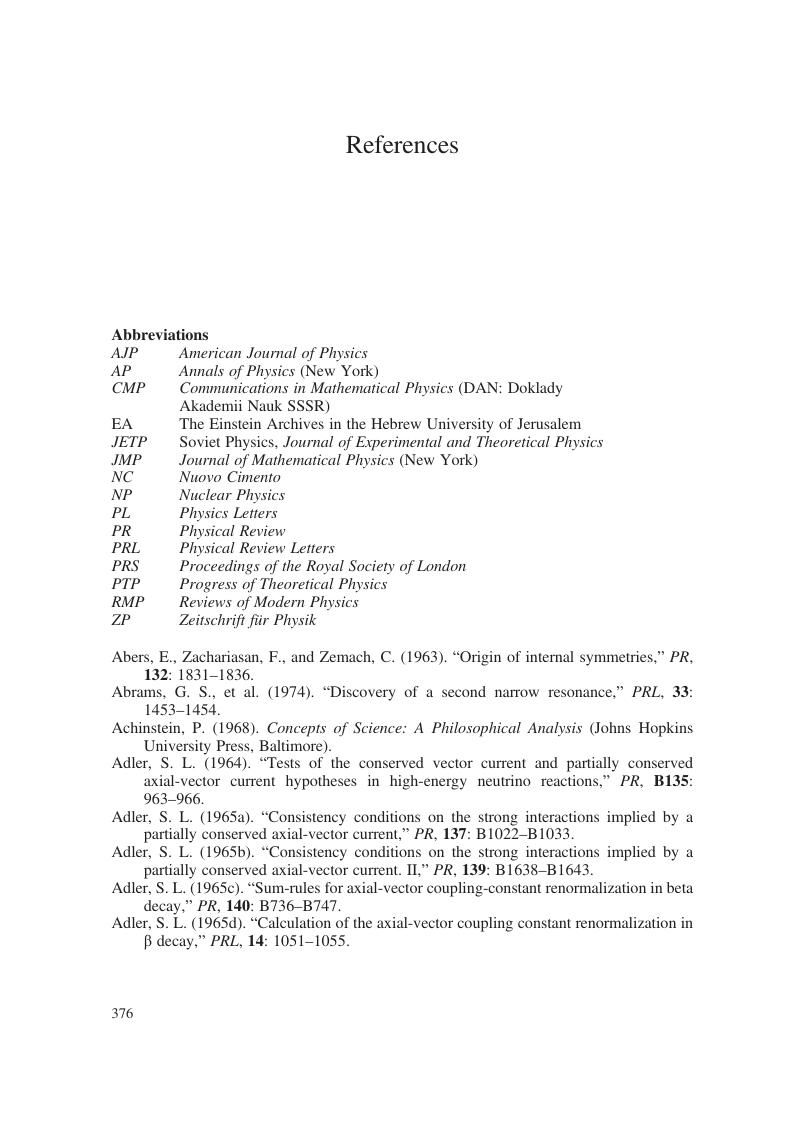Published online by Cambridge University Press: 01 October 2019

American Journal of Physics
Annals of Physics (New York)
Communications in Mathematical Physics (DAN: Doklady Akademii Nauk SSSR)
The Einstein Archives in the Hebrew University of Jerusalem
Soviet Physics, Journal of Experimental and Theoretical Physics
Journal of Mathematical Physics (New York)
Nuovo Cimento
Nuclear Physics
Physics Letters
Physical Review
Physical Review Letters
Proceedings of the Royal Society of London
Progress of Theoretical Physics
Reviews of Modern Physics
Zeitschrift für Physik
To save this book to your Kindle, first ensure no-reply@cambridge.org is added to your Approved Personal Document E-mail List under your Personal Document Settings on the Manage Your Content and Devices page of your Amazon account. Then enter the ‘name’ part of your Kindle email address below. Find out more about saving to your Kindle.
Note you can select to save to either the @free.kindle.com or @kindle.com variations. ‘@free.kindle.com’ emails are free but can only be saved to your device when it is connected to wi-fi. ‘@kindle.com’ emails can be delivered even when you are not connected to wi-fi, but note that service fees apply.
Find out more about the Kindle Personal Document Service.
To save content items to your account, please confirm that you agree to abide by our usage policies. If this is the first time you use this feature, you will be asked to authorise Cambridge Core to connect with your account. Find out more about saving content to Dropbox.
To save content items to your account, please confirm that you agree to abide by our usage policies. If this is the first time you use this feature, you will be asked to authorise Cambridge Core to connect with your account. Find out more about saving content to Google Drive.